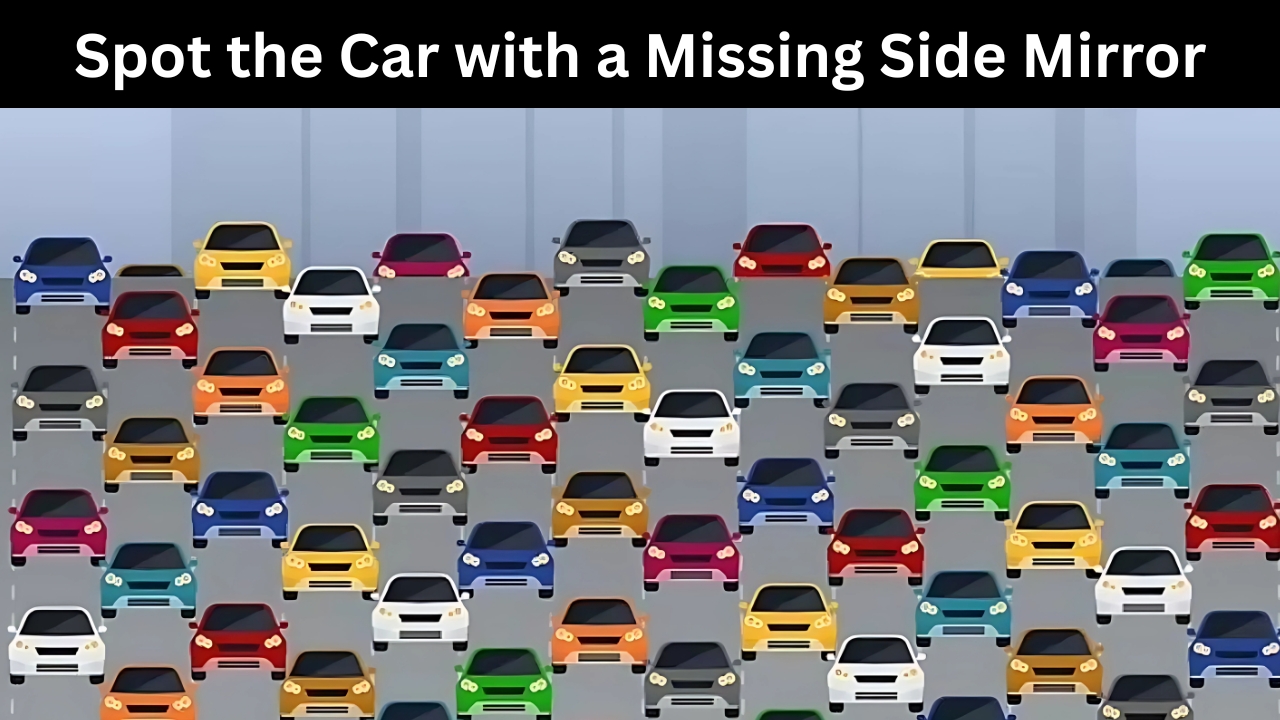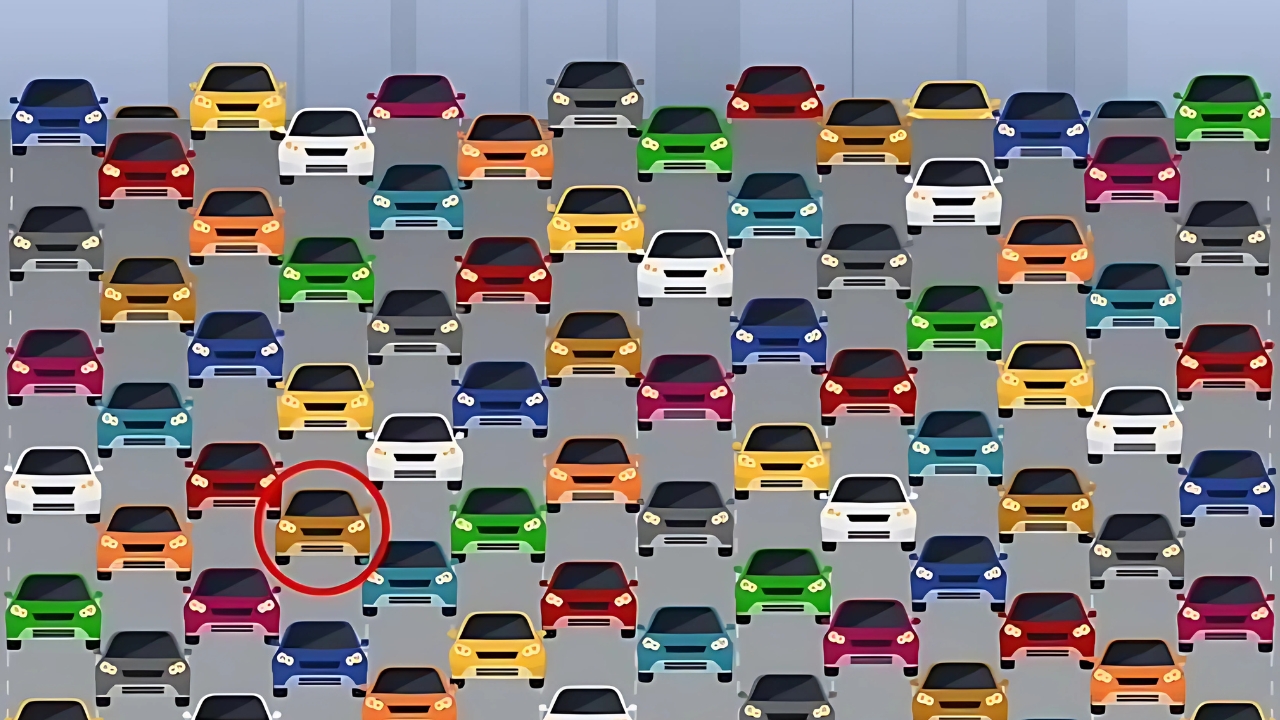Spot Missing Side Mirror : Optical illusions have long fascinated people, challenging our perception and cognitive abilities in ways that are both fun and intellectually stimulating. They test our attention to detail, visual processing, and problem-solving skills, often revealing how our brains interpret the world around us.
One such engaging challenge is the optical illusion IQ test that asks you to spot a car with a missing side mirror in a crowded image. This brain teaser, popular for its deceptive simplicity, invites participants to dive into a visual puzzle that requires sharp observation and focus. In this article, we’ll explore the intricacies of this optical illusion, why it captivates us, how it works as an IQ test, and tips to master such challenges.
What Is an Optical Illusion?
An optical illusion occurs when our eyes and brain misinterpret visual information, leading us to perceive something differently from reality. These illusions exploit the brain’s tendency to make assumptions about patterns, shapes, and objects based on past experiences. For example, in the “spot the car with a missing side mirror” challenge, the image is designed to overwhelm the viewer with multiple cars, colors, and details, making it difficult to pinpoint the anomaly.

Optical illusions are not just entertaining; they serve as valuable tools for understanding human perception. Psychologists and neuroscientists often use them to study how the brain processes visual data, revealing insights into cognition, attention, and even intelligence. This particular illusion, which asks you to identify a car with a missing side mirror, is a perfect example of how our brains can overlook subtle details when faced with a complex scene.
The Challenge: Spotting the Car with a Missing Side Mirror
The optical illusion IQ test presents an image filled with several cars, each with distinct features such as different colors, shapes, and orientations. Among them, one car stands out because it lacks a side mirror. The task sounds simple, but the crowded and chaotic nature of the image makes it a true test of observation. You’re typically given a time limit—say, 10 or 15 seconds—to find the car, adding pressure that mimics real-world decision-making scenarios.
The difficulty lies in the brain’s tendency to “fill in” missing information. When we see a car, we expect it to have two side mirrors, and our brain may automatically assume they’re present, even when one is missing. This phenomenon, known as perceptual completion, is a common trick used in optical illusions to challenge our attention to detail.
Why This Illusion Tests Your IQ
IQ tests often measure a range of cognitive abilities, including problem-solving, pattern recognition, and attention to detail. The “missing side mirror” challenge engages several of these skills:
-
Visual Processing: You must quickly scan and interpret a complex image, distinguishing relevant details from distractions.
-
Attention to Detail: Spotting the missing side mirror requires focusing on small elements that are easily overlooked.
-
Speed and Accuracy: The time limit forces you to balance speed with precision, a hallmark of cognitive efficiency.
-
Pattern Recognition: Cars typically have symmetrical features, so identifying an anomaly like a missing side mirror involves recognizing a break in the expected pattern.
By combining these elements, the illusion serves as a mini IQ test, assessing how well you can process information under pressure. It’s not just about finding the car—it’s about how efficiently and accurately you can do so.
The Science Behind Optical Illusions
Optical illusions like this one work because of how our visual system interacts with our brain. The human brain is wired to prioritize certain types of information, such as symmetry, contrast, and familiar shapes. When presented with a busy image, the brain tries to simplify it by focusing on the most prominent features, often ignoring subtle discrepancies.
In the case of the missing side mirror, the brain might assume all cars are complete because that’s the norm. This assumption is reinforced by the image’s complexity, which distracts from the anomaly. Neuroscientists explain that such illusions exploit the brain’s “top-down” processing, where expectations shape perception, sometimes at the expense of accuracy.
Tips to Solve the Optical Illusion
If you’re struggling to spot the car with the missing side mirror, here are some practical tips to improve your chances:
-
Break the Image into Sections: Instead of scanning the entire image at once, divide it into smaller parts. Focus on one section at a time to reduce overwhelm.
-
Look for Asymmetry: Since cars are generally symmetrical, a missing side mirror will disrupt this balance. Pay attention to the sides of each car.
-
Ignore Distractions: Bright colors, reflections, or other cars can pull your attention away. Train your eyes to focus only on the side mirrors.
-
Practice Peripheral Vision: Sometimes, the anomaly is easier to spot when you’re not looking directly at it. Try scanning the image with a soft gaze.
-
Time Yourself: Set a timer to mimic the pressure of the challenge. This helps train your brain to work efficiently under constraints.
With practice, you’ll get better at spotting the odd one out, not just in this illusion but in similar visual puzzles.
Why Optical Illusions Are Good for Your Brain
Engaging with optical illusions like this one is more than just a fun pastime—it’s a workout for your brain. These challenges stimulate cognitive functions such as memory, attention, and problem-solving. Regularly solving brain teasers can improve mental agility, enhance focus, and even delay cognitive decline as we age.
Moreover, optical illusions are a great way to develop patience and persistence. The frustration of not finding the missing side mirror right away can push you to refine your approach, fostering resilience and creative thinking. They also make learning fun, as they combine entertainment with intellectual growth.
The Appeal of Brain Teasers
The “spot the car with a missing side mirror” challenge is part of a broader category of brain teasers that have surged in popularity online. Social media platforms, puzzle websites, and even educational blogs frequently share such challenges to engage audiences. Their appeal lies in their accessibility—anyone can try them, regardless of age or expertise—and their ability to spark curiosity.
These puzzles also foster a sense of accomplishment. When you finally spot the car with the missing side mirror, the rush of satisfaction is rewarding. It’s a small victory that reinforces your confidence in your cognitive abilities.
Optical Illusion Answer

How to Create Your Own Optical Illusion
If you’re inspired by this challenge, you can try creating your own optical illusion. Start with a busy image, like a parking lot filled with cars. Use photo-editing software to remove a small but noticeable detail, such as a side mirror, from one object. Ensure the image is complex enough to distract from the anomaly but not so cluttered that it’s impossible to solve. Share it with friends or online to test others’ observation skills.
The optical illusion IQ test of spotting the car with a missing side mirror is a delightful blend of fun and intellectual challenge. It tests your ability to notice subtle details, process visual information quickly, and think critically under pressure. By engaging with such puzzles, you not only entertain yourself but also sharpen your cognitive skills. Whether you solve it in seconds or take a bit longer, the journey of finding the anomaly is a rewarding exercise for your brain. So, the next time you encounter a visual puzzle, dive in with confidence—you might just surprise yourself with how sharp your observation skills are!
